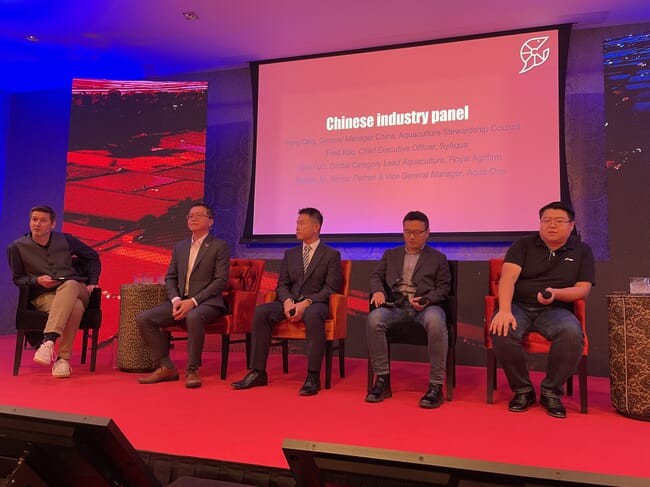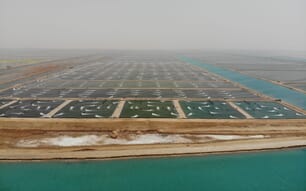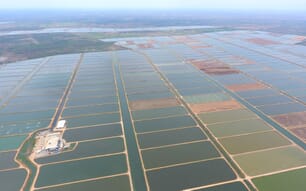
According to Guo, greenhouse farms and RAS facilities are growing much more swiftly than traditional farming systems
This was one of the key components of a very entertaining presentation on Chinese shrimp production, which was delivered today by Guo Fuci, global aquaculture lead at Royal Agrifirm.
Speaking at this week’s Global Shrimp Forum, Guo explained that greenhouse systems – which are essentially 40 x 10 m ponds covered by transparent plastic sheeting – now account for 30 percent of China’s domestic shrimp production, with 10,000 such ponds being built every quarter.
The greenhouse system, according to Guo, is particularly favoured in the more temperate parts of the country, such as Jiangsu Rudong, and the water temperature is artificially elevated using crude boiler systems, allowing the pond operators to produce shrimp in the winter months – in the run up to the Chinese New Year, when shrimp prices are at their highest.
Guo estimates that there are now 250,000 of these ponds, producing 500,000 tonnes of shrimp, and despite the challenges posed by typhoons and diseases, the low cost of establishing such systems and the high price that they can sell their live shrimp for makes them very appealing to investors and even family farmers.
According to Guo, it cost around $7,000 to build each greenhouse pond and this can be paid off within a year if the operators achieve an 80 percent survival rate.
RAS on the rise
While the greenhouse system is now very well established, according to Guo the most interesting emerging trend relates to the increasing number – and scale – of inland industrial indoor RAS farms. Although they only produce about 3 percent of the country’s shrimp at present, the largest eight of these farms are producing an impressive 70,000 tonnes of shrimp between them. One of the largest operators is Tongwei (one of the country’s main manufacturers of solar panels), which aims to hit 1 million tonnes in 5-10 years, according to Guo. Other big names in the sector include Evergreen and CP.
Despite the cost of setting up such systems, they have the potential to be located close to large conurbations, and provide them with highly-prized live shrimp.
Ronnie Jin, another panellist at the event, who develops RAS farms for Aqua-One, explained that the population of Beijing alone currently eats 500 tonnes of live shrimp a day, so there is clearly a solid market for operators of such systems.
He also believes that RAS farms will gain momentum, as greenhouse systems “occupy too much land, take too much groundwater, and discharge too much waste water”. As a result, both Jin and Guo predict that the government are likely to crack down on the greenhouse farms soon.





